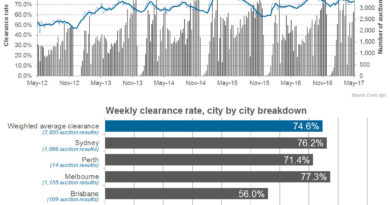How to play it safe with bridging loans
updated 4th October 2016
Thinking about a bridging loan?
If you are thinking of taking a bridging loan, here are a few tips to help you avoid getting burned:
1. Plan for your repayments.
While bridging loans are helpful in funding your property purchase or business deal, you need to factor in the costs in your decision and make sure you can meet the repayments. For example, a $100,000 loan taken at 3% per month would cost you $3,000 monthly interest. If you take it for three months, that’s a massive $9,000 on interest. Make sure that you do your sums so to ensure that you can recoup these costs with your new purchase.
2. Have a clearly defined exit strategy.
You don’t want to get stuck with a high-interest bearing loan, so ensure that you have a clear plan on how to repay the whole amount, either from selling your existing property or offloading some of your other assets on or before the term is due. If your way out is through refinancing, make sure that you start the process on the same day you get your bridging loan.
3. Obtain a letter of offer from your lender
You need to make sure you get a clearly written letter of offer from the lender and have it reviewed by your solicitor. It should be in plain English and not contain any ambiguous terms or conditions. It should also disclose all the costs involved..
4. Deal only with reputable organisations
Do your research and know whom you’re dealing with, how long they’ve been in business and how establish they are.
5. Watch out for the ‘extra’ fees
A lot of lenders will request some sort of a commitment fee or acceptance fee, which is often a few hundred dollars. Stone advises that you should not pay over $500 and be wary of lenders asking you more than that amount.
6. Don’t treat it as a long-term facility
Bridging loans are short-term credit and must be treated as such.
If you need a loan fast, bridging finance can be handy. Yes it’s not cheap but it may help you get out of financial rut or get you that ideal property. Make sure you have a sound exit strategy in place to get out of higher interest rates. Prevention is better than cure, so get your documents check with your own lawyer.
Bridge over troubled deals
You’ve just come across a deal that’s too good to miss –but the sale of your current property is taking longer than you think. Should you bite the bullet and take a short-term fix or wait until you have your finances in place?
Many investors find themselves caught in a situation where they find the ‘ultimate’ investment property, but have not organised their finances or still awaiting sale of their current asset.
Ideally, you would arrange a normal mortgage to get better interest rates; however, the drawn-out process could get in the way in sealing a deal that requires quick settlement. In the current fast-moving market, your ability to come up with the funding can spell the difference between success and lost opportunities.
While you don’t have to miss out on a ‘perfect’ investment just because your existing property is yet to sell, you have to tread carefully when considering the alternatives.
Bridging the gap
Bridging loans are typically used as the last resort to save a property or business transaction. They are short-term loans secured against your property covering a certain period spanning from a few days to a few months.
Investors use them to cover the shortfall if the investment property is not tenanted for some time and they need cash to keep up with repayments. Bridging loans can be invaluable for investors who are in financial difficulty and need to raise capital quickly to repay a pressing debt.
Private lenders can settle within 24 hours while some can take up to four days before they release the money. Bank offerings such as that of St. George’s take between 4 to 6 weeks – roughly the same time it takes a normal loan.
How do you qualify?
Bridging loans are probably one of the easiest finance you could get. Many major banks offer bridging finance to purchasers, all you need to do is to go through a normal mortgage application process, which can take a few weeks to complete, just like any other mortgage applications. As mentioned, private funds are more flexible but they carry higher rates.
To qualify, generally you have to meet the following criteria:
- Enough equity in the property: You need to have a combined LVR of no greater than 75% for one property although some lenders are willing to accept 80% LVR
- Exit strategy: You need to have a plan to repay the loan within the agreed term. Ensure that you have enough money coming by way of property sale or from other assets to cover interest plus cost
- Purpose: Ensure you’re using the fund to get out of a worse situation or alleviate the current dire situation.
Crunching the numbers: Is bridging loan worth it?
Since bridging loans require that the loan amount will not exceed 80% LVR, you would need to have around 50% equity or more in the existing property you will be selling.
To see if the numbers stack up, let’s take the following example:
Assuming you have a property valued at $250,000, on which you owed $125,000. You want to buy a property worth $250,000. This will bring the total values of properties to $500,000.
- With fees you need to borrow $260,000 to do this deal.
- The total loan needed to cover the existing debt and buy the new property is $385,000.
- The LVR of this debt is 73% and so is below the 80% required.
- The final loan after the existing property is sold after sales commissions and costs are considered is $142,000, assuming it achieves the expected price
The only real advantage of taking a bridging loan occurs if a person is able to secure a new property which then goes up in value at a greater rate than the resulting costs to do the transaction – that is the growth is greater than the bridging finance and other property costs. However, since that the person doing this deal already owns property, most probably in the same market they are buying into again, if the new property goes up in value, so would have the old property.
Do you really need a bridging loan?
Those investors who are in a financial chasm can still secure the deal with many options before going through the traditional bridging finance route. He offers the following tactics to consider:
- Ask for a longer-term settlement initially or ask for extension for the initially negotiated settlement. Bear in mind, this may attract additional cost or penalty. ‘You don’t get if you don’t ask’.
- Buy yourself more time while making your vendor comfortable. Pay only the deposit, offer the existing property as additional security to the vendor of the new property, so that they can give you more time to sell your existing property, knowing that they have got ‘your money’, it’s just a matter of time you can sell yours. If you already have a mortgage on your property, the vendor of the new property may only have a caveat of your existing property, when you sell your property, they will get their money after the first mortgagor.
- Find out how much money the vendor of the new property really wants at this moment. For example, they may only need 40% of the purchase price to clear the mortgage, and they can wait for the rest a bit longer. In this case, you only need to find another 30% of the money while you’re waiting for the sale of your property. For most investors, it’s a lot easier to find smaller amount from other sources than larger amount.
- Find out why the vendor has to sell you such a good deal. Good deals usually come from desperate sellers. For example, if the vendor is having financial difficulty in paying the mortgage and have to sell, you can offer to pay for the mortgage payment until you sell your property, you can always include that in your price. Solving their problem is more important than giving them cash.
- You may not need to sell your property to buy the new one. Most investors don’t know all the financing options, they might be told that they can’t afford another property, but this is not always true, it’s important to talk to a good mortgage finance strategist.
- You can also check if you can get additional finance from your existing property, such as extending your current Line of Credit, and draw the money out to pay for the new purchase. This way, you give yourself a bridge from what you’ve already got.
- You can also get bridging finance from friends and family, or other fellow investors, provided you have good credibility with them.
This article has been republished with permission from Your Investment Property magazine. Try our Loan Repayment Calculator and find the best repayment strategy for you.



